Few cultivated plants grow better in Siberian conditions than in the southern regions. One of these plants is Beijing cabbage.
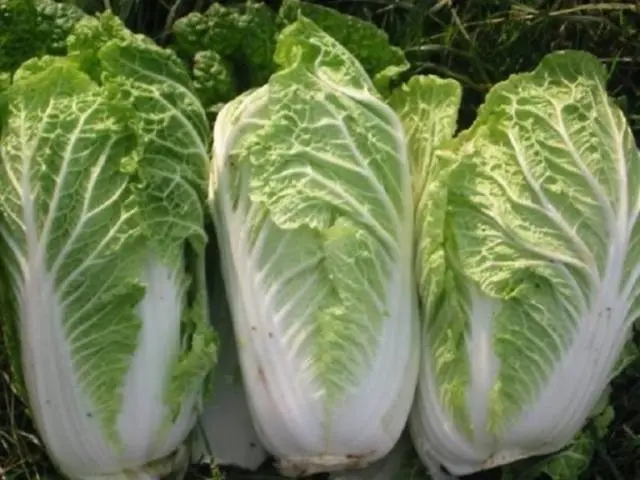
Characterization
Beijing cabbage is a biennial plant of the cruciferous family, grown in culture as an annual. There are leaf and head varieties. Her leaves are tender, juicy, with a dense median vein. It is used for preparation of salads, soups, sauces. Great for pickling, alone or with other vegetables.
Beijing cabbage has several advantages:
- early maturity;
- Undemanding to the soil;
- Shade tolerance;
- resistance to fungal diseases;
- Tolerance to low temperatures.
Beijing cabbage develops very quickly, it takes from 60 to 80 days to form mature heads of cabbage. This allows you to get two crops per season. The second crop can be stored for storage, at a temperature of 3 – 5 degrees Celsius, Chinese cabbage can be stored all winter.
Chinese cabbage grows in all soils, but soils with very high acidity should be treated with an acid-reducing agent before planting.
This cabbage is very rarely affected by fungal diseases; under adverse conditions, it can suffer from rot.
Beijing cabbage develops best at a temperature of 8 to 20 degrees. Cabbage tolerates a short-term decrease in temperature to 3 – 4 degrees of heat without consequences, an increase of more than 20 degrees of heat causes a head of cabbage to shoot. Therefore, the cultivation of Beijing cabbage in Siberia is easier than in the southern regions.
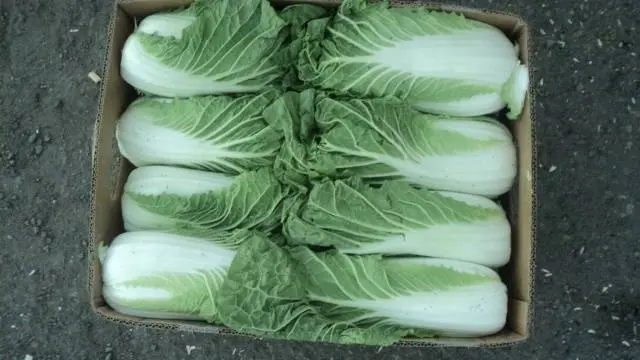
Planting and care
When growing Beijing cabbage, it is necessary to take into account the peculiarity of this vegetable – sensitivity to light and elevated temperatures. For the formation of a head of this cabbage, daylight hours are not longer than 12 hours and the air temperature is not higher than 20 degrees. Failure to comply with the regimen causes the cabbage to shoot, the formation of a head and the growth of leaves stops. Such plants are suitable only for obtaining seeds.
Before you grow Chinese cabbage in Siberia, you need to provide plants with shelter that protects from frost and light. It is necessary to carefully monitor the temperature inside the shelter, on a sunny day the temperature can exceed 20 degrees Celsius. To prevent this, shelters must be removed or opened during the day.
There are three options for growing Chinese cabbage in Siberia:
- Spring in the greenhouse;
- In the summer in the open field;
- Greenhouse in autumn.
For spring cultivation, seed sowing begins in March or early April. Seeds begin to germinate at a temperature of about 4 degrees Celsius, this makes it possible to sow them immediately into the ground in a greenhouse.
Before sowing, it is advisable to soak the seeds in a disinfectant solution to avoid infection of seedlings. You can also treat the seeds with growth stimulants or a complex of nutrients.
Before the start of sowing seeds, the soil in the greenhouse is dug up, if necessary, a complex of fertilizers is applied. If cruciferous plants were previously grown in the greenhouse, it is necessary to carry out a comprehensive soil treatment. The soil can accumulate larvae of pests and pathogens, so it is necessary to use insecticides and fungicides. In addition to the soil, tools and greenhouse walls require processing, especially corners and joints. Solutions for processing are prepared according to the instructions.

Seeds are planted in the prepared soil, two or three seeds at a distance of 35 – 40 cm. The seeding depth should not exceed 3 cm. The air temperature for seed germination can vary between 5 – 12 degrees Celsius, the soil temperature should be at least 4 degrees in nighttime.
After the emergence of seedlings, thinning is carried out, leaving one of the strongest sprouts in each hole. For the normal growth of heads of cabbage, the temperature inside the greenhouse is maintained at a level of 12 – 15 degrees. Water heads of cabbage as needed, excessive watering is harmful to it. Further care of the heads consists of weeding, watering, fertilizing and protecting the heads from harmful insects.
If the seeds were sown at the end of March, then at the end of May you can harvest. Heads of cabbage are cut, dried, wrapped with cling film each head and cleaned in a cool place with a temperature of no more than 6 degrees Celsius. If cabbage heads are left to grow further, the formation of flower stalks will begin, the nutritional value of the vegetable will decrease significantly.

For summer cultivation, it is necessary to prepare shelters from light and high temperatures in order to create an optimal regime for Chinese cabbage.
Sowing seeds is carried out in early June, immediately in open ground or in cups for growing seedlings. As a rule, in Siberia at this time the threat of frost is low, but it is still necessary to follow the weather forecast and, if necessary, cover the heads.
Caring for beds with heads of Beijing cabbage consists in timely watering, protection from pests and weeding.
Since a short daylight hours are needed to form a head of cabbage, after 6 pm the beds with heads of cabbage are covered with an opaque material. You can use for these purposes a black plastic film or a dense dark cloth.
Sowing of seeds is carried out in early June, seedlings do not cover from sunlight. By the end of summer, the seeds will ripen, they need to be collected and dried.
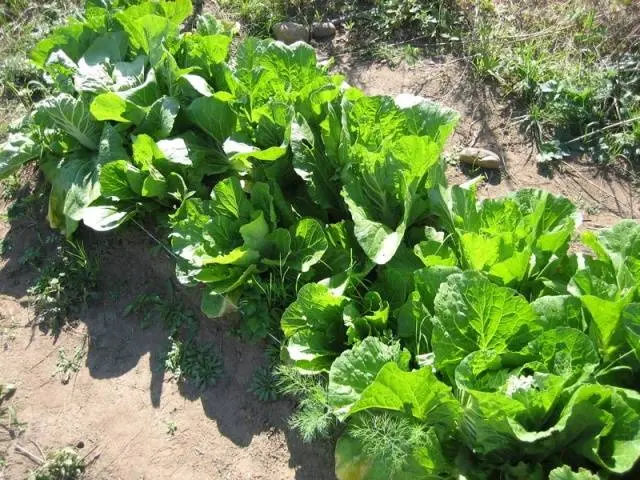
To lay cabbages for winter storage, seeds are sown in a greenhouse at the end of August. Two months later, when the cabbages are ripe, they are placed in storage. For storage of heads of cabbage, a basement or other room with a temperature not higher than 5 degrees Celsius is used. Each head of cabbage is wrapped in plastic wrap and then placed in wooden or cardboard boxes. 1 – 2 times a month, it is advisable to inspect the heads of cabbage, rejecting those affected by rot.
Growing through seedlings
Beijing cabbage can also be grown through seedlings. This plant reacts very poorly to damage to the root system, therefore, when growing seedlings, they do not pick. Each plant is preferably planted in a separate container. Seedlings are transplanted into the ground very carefully, trying not to damage the roots.
For growing seedlings, you can use purchased soil or make an earthen mixture yourself.
For the preparation of the earth mixture is used:
- Garden soil – 1 liter;
- Humus – 1 liter;
- rotted manure – 1 cup;
- Sand – 1 glass;
- A complex of microelements – according to the instructions.
Cups or cassettes are filled with soil for seedlings, tamping it a little. Seeds are planted 1 or 2 in each cup. Containers with seedlings are placed in a cool room, the temperature in which does not rise above 12 degrees.
On a sunny day, it is necessary to cover the seedlings from the rays. For these purposes, you can use gauze, white agrofibre, fine mesh.
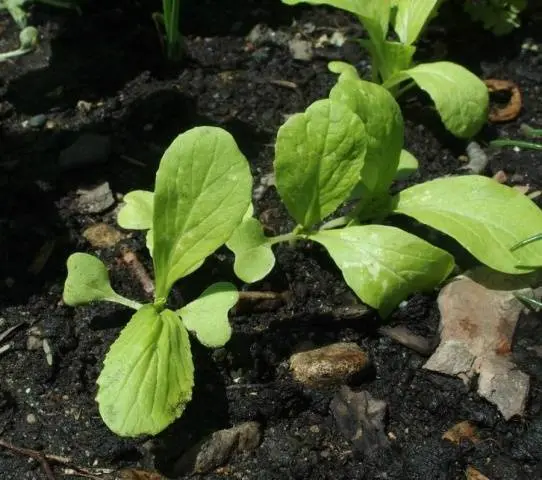
After a few days, the first shoots will appear. For further development, the seedlings will need a lot of light; in cloudy weather, additional illumination may be necessary so that the seedlings do not stretch out. The number of light hours should not exceed 12, it is important to carefully monitor this and do not forget to turn off the lamp in time.
When growing in summer after 6 pm, it is necessary to completely block the access of light to seedlings.
Watering seedlings should be done carefully, excess liquid can stagnate and harm the root system.
fertilizers
Use fertilizers for growing this cabbage should be careful. The leaves and heads of the plant are capable of accumulating nitrates and other harmful substances. To avoid the accumulation of nitrates in the head and leaves, it is necessary to dose nitrogen fertilizers very carefully.
The source of nitrogen for plants can be:
- Manure;
- Humus;
- Infusion of herbs;
- Complex fertilizers;
- Nitrogen chemical fertilizers.
Any organic matter, such as manure and humus, enrich the earth with nitrogen compounds that are not fully absorbed by plants. Part of the nitrogen compounds will become available for absorption by the root system of plants only for the next season after application. When determining how much fertilizer to apply for Beijing cabbage, this factor must be taken into account.
Chemical fertilizers are applied strictly in accordance with the instructions. For complex fertilizers, it is imperative to check the composition. If the complex includes nitrogen compounds, other fertilizers should not be used.
Heads of cabbage need a lot of phosphorus, magnesium and potassium for normal growth. The introduction of these trace elements is mandatory.
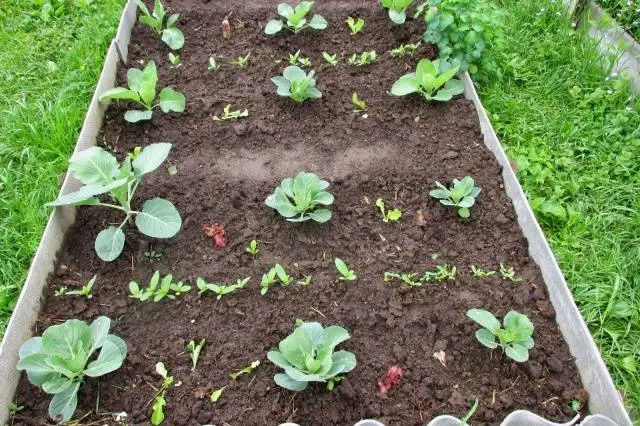
Growing Beijing cabbage in Siberia requires attention and care, but the resulting harvest of a tasty and healthy vegetable will justify all the efforts.









